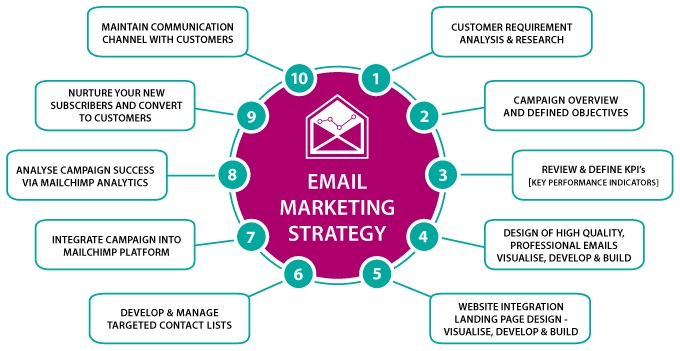
5 Effective Ways to Improve Your Email Marketing Campaigns
Hi there! If you’re new to email marketing, you are undoubtedly aware of how difficult it can be to get noticed in the sea of crowded inboxes. To make your emails stand out in the sea of brands competing for consumers’ attention, you must hone your strategy. Let’s look at five practical strategies to improve your email marketing efforts and reach new heights of audience engagement!
1. Divide Up Your Viewership
Why This Is Important:
Consider this: how frequently do you receive emails that aren’t relevant to your interests? It can be quite annoying, don’t you think? Thus, it’s essential to segment your audience! By segmenting your email list according to individual characteristics such as behavior, preferences, or demographics, you can send more personalized and relevant content to each recipient.
How to Put It Into Practice:
Examine your current email list as a starting point. What details about your subscribers do you know? Purchase history, location, and age are all invaluable information!
Develop campaigns that are specifically tailored to the needs and interests of each group. For example, a welcome email could be appreciated by new clients, and special offers could be enjoyed by devoted ones.
Remember to use personalization tokens to further customize the feel of your emails. A small personal touch makes a big difference!
2. Make Subject Lines More Effective
Why This Is Important:
It’s a fact that people notice your subject line first.
If it doesn’t grab their attention, they’re probably going to hit delete before even opening your email. Make sure your subject lines pique their interest enough for them to click through!
How to Put It Into Practice:
To promote opens, use language that is action-oriented, such as “Unlock Your Exclusive Offer” or “Don’t Miss Out on This Deal!”
A sense of urgency or scarcity could be added by using a phrase like “Last Chance to Save 20%!” Isn’t it exciting to a certain extent?
Include the recipient’s name or any other pertinent information to make your subject lines unique. A minor adjustment can have a significant impact!
3. Test Your Emails A/B
Why This Is Important:
Ever wonder what appeals to your audience the most? The solution is A/B testing! You can determine which version of an email generates better engagement by testing two different versions. Similar to experimenting in the kitchen, sometimes all it takes is a few minor adjustments to a recipe to achieve the ideal flavor!
How to Put It Into Practice:
Select one thing to test, such as the email’s content, subject line, or even the location of the call to action.
Distribute one copy to a subset of your audience and the other copy to an entirely other audience.
Apply the knowledge you gain from the analysis of the outcomes to upcoming campaigns. It’s all about making constant progress!
4. Make sure your calls to action (CTAs) are clear
Why It Matters: You should direct your readers to take a specific action with every email you send. A clear call to action (CTA) is crucial, whether you want them to visit your website, register for an event, or make a purchase. Consider it your kind prod to get them moving!
How to Put It Into Practice:
For your CTAs, use eye-catching, bold buttons. Ideally, they should leap out of the email!
Make your calls to action clear and succinct. It works well to use phrases like “Shop Now,” “Download Your Free Guide,” or “Join Us Today!”
To guarantee maximum visibility, place your CTAs strategically near the top, in the middle, and at the end of your email.
5. Examine and Modify
Why This Is Important:
It’s time to check in with your emails now that you’ve sent them out. Reviewing your email metrics on a regular basis will help you identify what is and is not effective. It’s similar to looking up your GPS location to see if you need to reroute or are in the correct place!
How to Put It Into Practice:
Pay close attention to key performance indicators (KPIs) such as conversions, click-through rates, and open rates.
To identify trends in the effectiveness of your emails, use analytics tools. What functions? What isn’t it?
Never hesitate to modify your campaigns in light of your findings. Adaptability is essential.
Conclusion
It’s not hard to improve your email marketing campaigns. Through audience segmentation, subject line optimization, A/B testing, clear call to action (CTAs), and frequent performance analysis, you can craft more engaging email campaigns. Your email marketing success is almost here, so get your hands dirty and put these strategies into practice!
